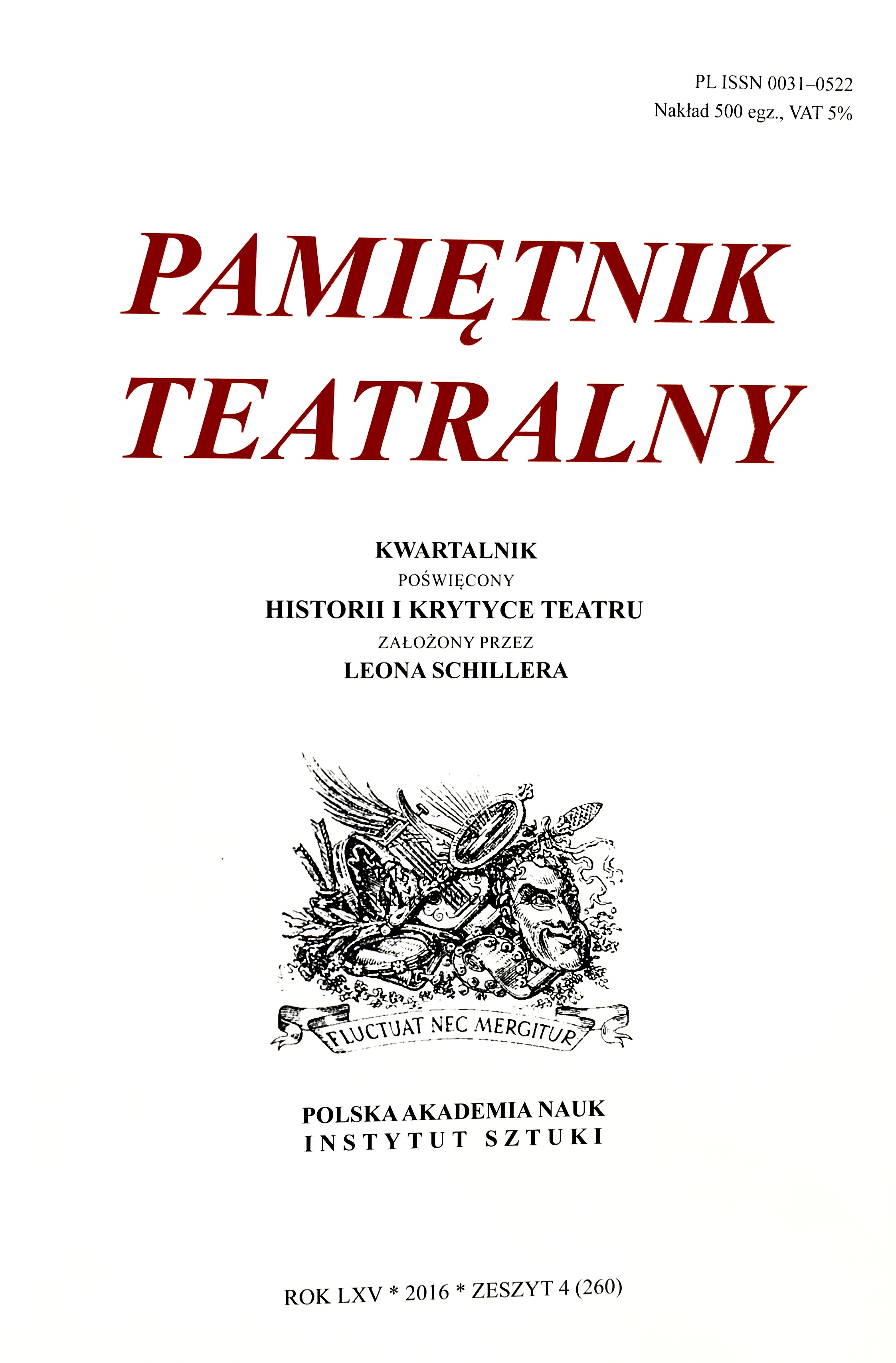Formy, farsze i prawa syntezy, czyli „chemia związków jakości teatralnych” według Witkacego
Forms, Falsehoods and Laws of Synthesis, or “the Chemistry of Theatrical Quality Complexes” According to Witkacy
Author(s): Joanna Stacewicz-PodlipskaSubject(s): Theatre, Dance, Performing Arts
Published by: Instytut Sztuki Polskiej Akademii Nauk
Keywords: Witkacy;scenography;stage design;
Summary/Abstract: The reception of Witkacy’s work can be reduced to acts of cutting pieces of closely related contents that happen to fit one’s purpose out of a whole that contains many other qualities and ingredients. It was so before the war, when Witkiewicz, hardly recognising his own dramas on stage, complained that there must be “some limits of identity of a work with itself.” The same was true for the second half of the 20th century, when he joined the avant-garde classics in supplying his creations as raw material for artistic experimentation, the practice which he had, by the way, hated. He also became an “honorary patron” of a heterogeneous artistic phenomenon known under the unfortunate name of “visual theatre,” which, as Konstanty Puzyna once remarked, reacted only “to a small portion of what Witkiewicz’s plays contain: to his visual imagination.” Misconstructions of the concept of Form which, fused with its other historical definitions and uses, generated more and more misunderstandings was what added most to the confusion. Had the concept been analysed in all of its complexity that Witkiewicz intended, and particularly, within the larger conceptual framework of his thought, there would have been no room for ambiguity. The closest terminological associates of Witkiewicz’s “Form” belong to the family of words referring to unity, namely: “alloy,” “amalgam,” or “synthesis.” Form was meant to contain all that, having been “processed,” i.e. having undergone amalgamation, constituted the primordial matter of Art. Therefore, what Witkacy wanted for the theatre was not profusion of visual qualities, not to “make theatre ‘painterly’”, as he put it—not to eliminate content in favour of form. Instead, he wanted the theatrical work to be composed mysteriously, in the process of chemical, or alchemical, Formation, in a magical act of giving shape. This was the level at which the issues that interested him the most really resided, including the fundamental question of unity in plurality. It is precisely this mystery of Form, with all its perplexing and embarrassing metaphysics that has been persistently and pointedly ignored by Witkiewicz’s self- or otherwise appointed inheritors. And representatives of various types of “the theatre of visual narration”, to use a more adequate term coined by Zbigniew Taranienko, from the pre-war Cricot Theatre to the group that Puzyna dubbed “Witkacoplastic theatre” (Witkacoplastyka), did err in this respect as well. Just as long, however, as the theatre of visual narration was preoccupied with resolving the problems stemming from aporias of Modernism, references to Witkacy were more or less warranted. But postmodernism that loves the fragmentary, makes values relative and annihilates all stable points of reference misses the point completely, and the Theory of Pure Form transmogrifies into the practice of “open form” that leaves Witkiewicz’s major postulates further and further behind.
Journal: Pamiętnik Teatralny
- Issue Year: 260/2016
- Issue No: 4
- Page Range: 71-90
- Page Count: 20
- Language: Polish

